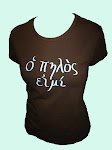
As Easter quickly approaches (hooray!), I’ve been reflecting on the past Lenten season and thinking about all of the sacrifices that the church family has traditionally practiced during the 40 days preceding the greatest holiday on the church calendar. From fasting and spending increased time in prayer to giving more of money and resources, the church has a little stewardship marathon at this time of year, and sometimes we don’t even realize it! So I thought I’d do a quick rundown of Lenten history.
There is evidence from early writings of Irenaeus (c.130-200) of Lenten preparation since the inception of the church, but practices and duration of Lent varied. In 325, the Council of Nicaea called for a provincial synod to be held “before the 40 days of Lent,” which clearly implies that the 40 days of Lent was a recognizable standard. Athanasius (d. 373), Cyril of Alexandria (d. 444), and Pope St. Leo (d. 461) each spoke about Lenten fasting. Differences occurred in the church regarding how much fasting should happen, with various church cities practicing weekday fasting, 6-day a week fasting, or partial fasting that would translate today as a vegan diet. Additionally, while fasting, the general rule was to eat one meal a day, in the evening or at 3pm.
Until the 600s, Lent started on the fortieth Sunday, but Gregory the Great moved it to a Wednesday in order that the number of days before Easter (excluding Sundays, feast days) was 40. The naming of Ash Wednesday is also attributed to a ceremony performed by Gregory. On Ash Wednesday, Gregory would mark the foreheads of Christians who had come to church for forgiveness with ashes, which are symbolic of repentance and mortality, as in Gen 3:19: “You are dust, and to dust you will return.”
As the Lenten fasting rules evolved, more exceptions were made to the fasting process, so that today the policy of the Catholic Church is that Ash Wednesday marks the beginning of Lent, which lasts for 40 days, not including Sundays. On Ash Wednesday and Good Friday, fasting should occur (which means having one full meal a day and smaller snacks to maintain strength – abstaining from meat), and on all Fridays of Lent, one should abstain from meat other than fish. The Catholic Church encourages people to sacrifice something during Lent, as well as to give more freely of their resources. The Eastern Orthodox Church still practices more strict versions of Lent, and some mainline Protestant denominations (such as Anglicans, Episcopalians, and Lutherans) practice Lent, but many do not.
However, as a model for stewardship, the early church practice of focusing time, energy, and our bodies upon God remains a good standard.
References: 1, 2, 3.
This sweet Easter dish is from thebrickkiln's Etsy shop! They have other Easter dishes, too :)!



